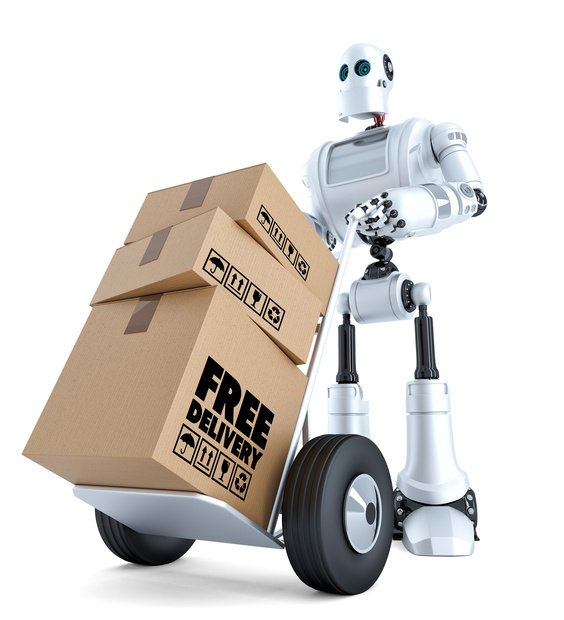Continued growth of e-commerce and heightened customer expectations have prompted huge innovation in last-mile delivery practices. Last-mile delivery involves three main players – customers, merchants, and delivery providers – each with a different set of challenges and expectations.
Customers have high expectations for speed, flexibility, security, and delivery cost. A 2016 survey by Temando showed that most customers value the option for same-day delivery. Many would also like in-store shopping experiences to offer home, office and other shipping capabilities.
In addition to location expectations, time and day preferences are also prevalent. Customers prefer deliveries to take place on the weekend or after business hours for fear of weather or theft risks.
Small retailers face high shipping rates since they lack the bargaining power and a large network of distribution centers needed to offer cheap, fast delivery.
Large retailers, on the other hand, must meet the variety of expectations demanded by fickle customers. This entails offering multiple shipping options.
For delivery providers, meeting the complex demands of both the consumer and the merchant is a struggle, especially when trying to do it profitably. They’re expected to provide flexible, tech-savvy service while also managing peak times and costs and poorly packaged goods.
In order to keep up with the evolving customer expectations and high volume of deliveries, these innovations have been developed. They’ve increased competition in the business.
Advanced Algorithms and Analytics
Advanced algorithms and analytics are being used by both traditional firms and new entrants. They allow new entrants to access the last-mile market quickly and with the low initial investment and operating costs.
Companies that rely on crowdsourcin

g or subcontracted drivers are especially attracted to them because they allow the company to avoid operating their own fleet and to employ full-time drivers.
Advanced algorithms and analytics also make it easier for new entrants to offer same-day delivery and the option to shop for a product on behalf of someone else. Product search-and-match tools allow the latter, while task-courier matching and routing optimization make same-day delivery possible.
Traditional delivery companies can enhance their offerings by using this innovation too. More sophisticated algorithms allow them to fulfill customer requests for specific delivery times, inform the customer of the delivery time, and allow the customer to schedule a specific pickup time from a retailer. Other algorithms make it possible for deliverers to offer a change of delivery location or time and submission of specific delivery instructions.
Drones
The key advantage to unmanned drones is speed. Unconstrained by road congestion and infrastructure issues, drones are able to deliver faster than cars and trucks.
Drones can also travel through difficult terrains, such as mountains and forests, easily and with a shorter route.
Utilizing drones instead of delivery cars and trucks offers a decreased environmental impact, as fewer cars and trucks will be needed on the roads, resulting in less pollution.
But, drones currently have a very small shipping capacity. In addition, their GPS data can be inaccurate, causing errors in delivery locations. If a package was delivered into a swimming pool, for instance, the contents would likely be damaged, causing issues for the delivery provider and the merchant.
These cons aren’t necessarily limiting for drone usage, though.
It is estimated that around 20% of Amazon’s e-commerce orders meet the size and distance criteria for drone delivery, making drones a pretty attractive technology for this company and many more.
Robots

Similar to drones, delivery robots are unmanned delivery devices that are remote-operated by a controller. But, these devices are designed to travel by “foot” or bike at no more than 4 miles per hour.
This innovation is perfect for suburban areas that aren’t busy, assisted-living facilities, and campuses. They allow quick, flexible delivery and a reduced environmental impact. Robots are carbon-emission free.
Their advantage over drones is their larger shipping capacity. Of course, this means they’re able to deliver larger packages, but it also means they’re able to carry more than one package at a time. This increases efficiency and allows multiple deliveries to be made to customers in a close area.
Driverless Vehicles
Driverless, or autonomous, vehicles are becoming more and more buzzworthy. These vehicles are capable of sensing their environment and navigating with no human input or control.
Major automakers and tech companies like Google and Uber have already begun testing autonomous vehicles, and hope to significantly reduce the number of car accidents and car-related fatalities through the use of them.
Delivery companies are attracted to these vehicles because of the little-to-no labor costs associated with using them. In addition, without a human driver, the cars and trucks can operate for longer periods of time without stops and breaks.
Driverless vehicles would also be ideal for deliveries to remote locations.
Read next: Driverless Trucks: A Labor Force Threat or an Invaluable Industry Opportunity?
FacebookTwitterShare
